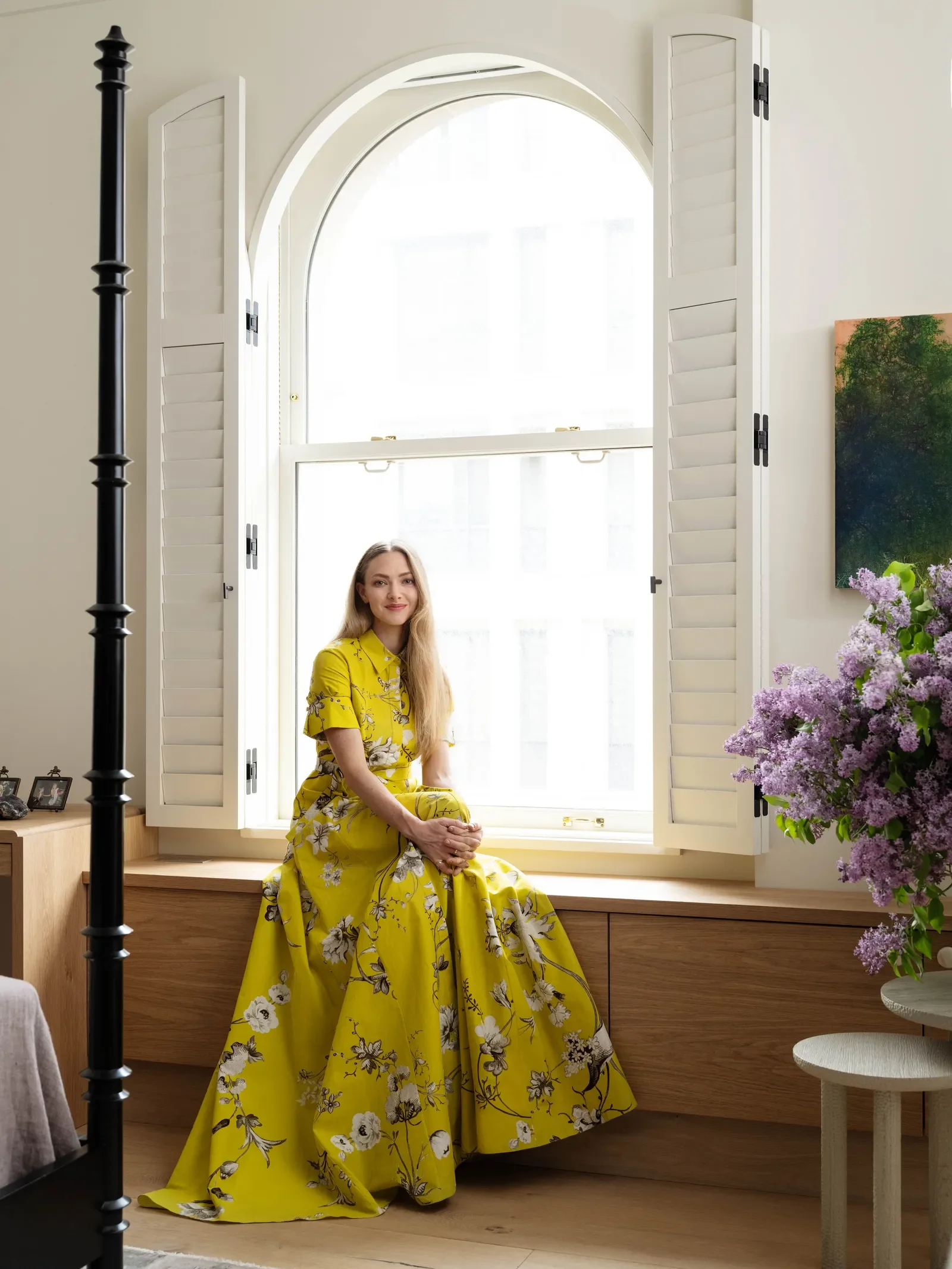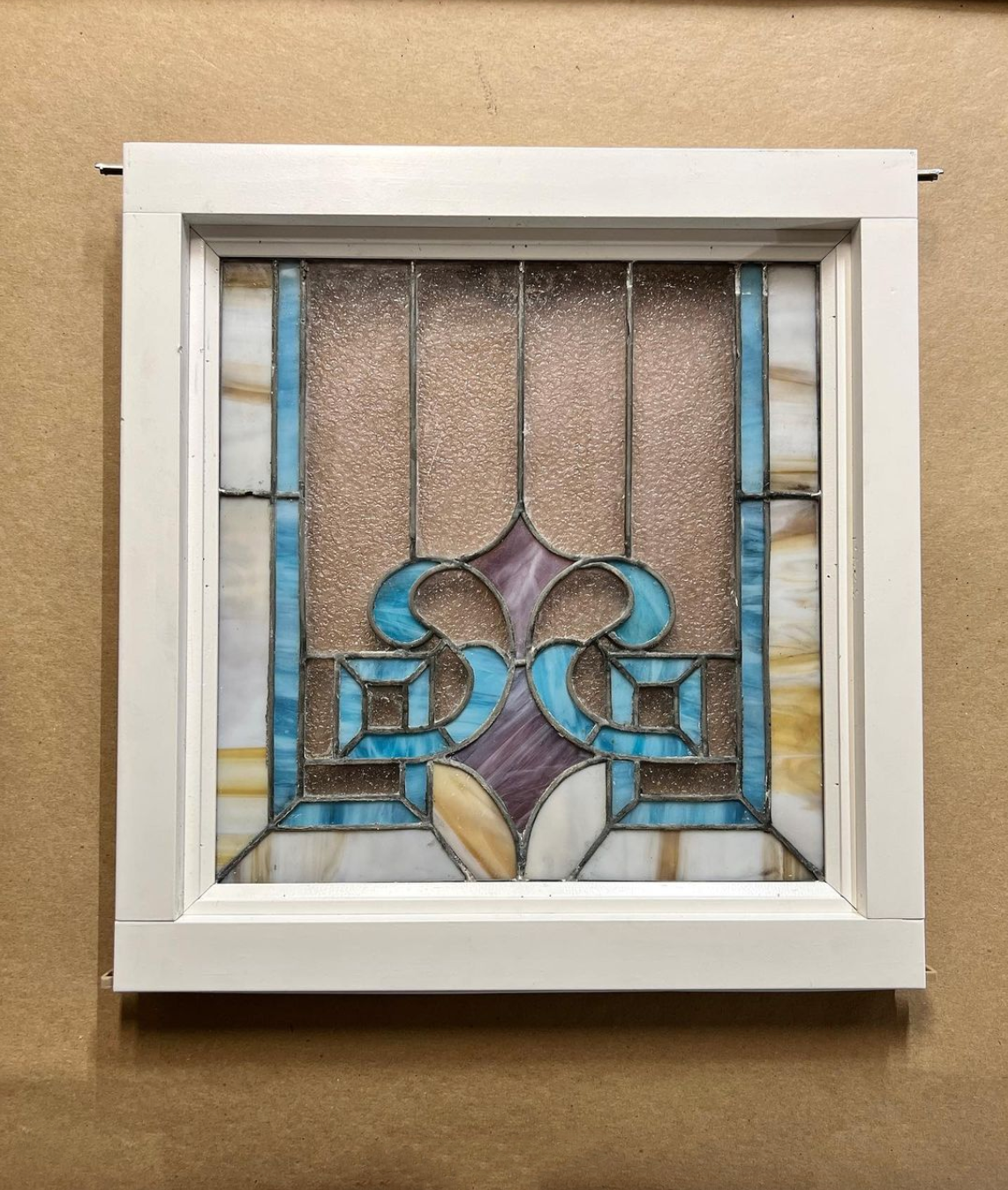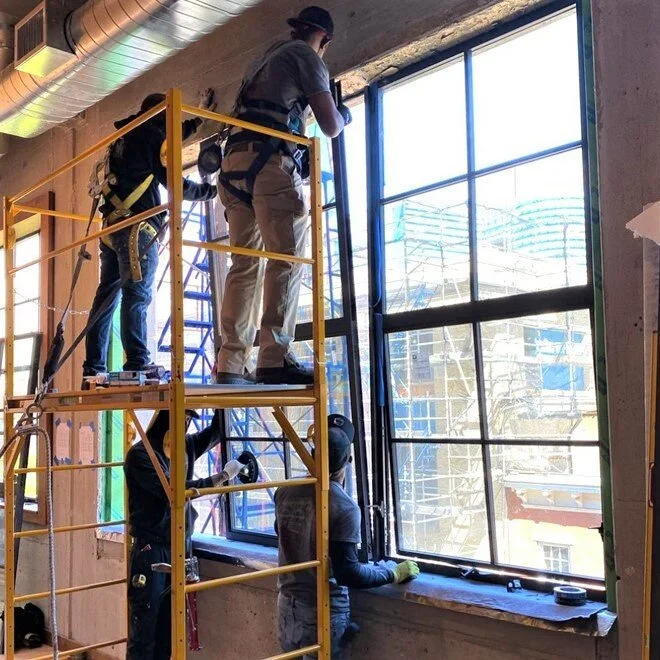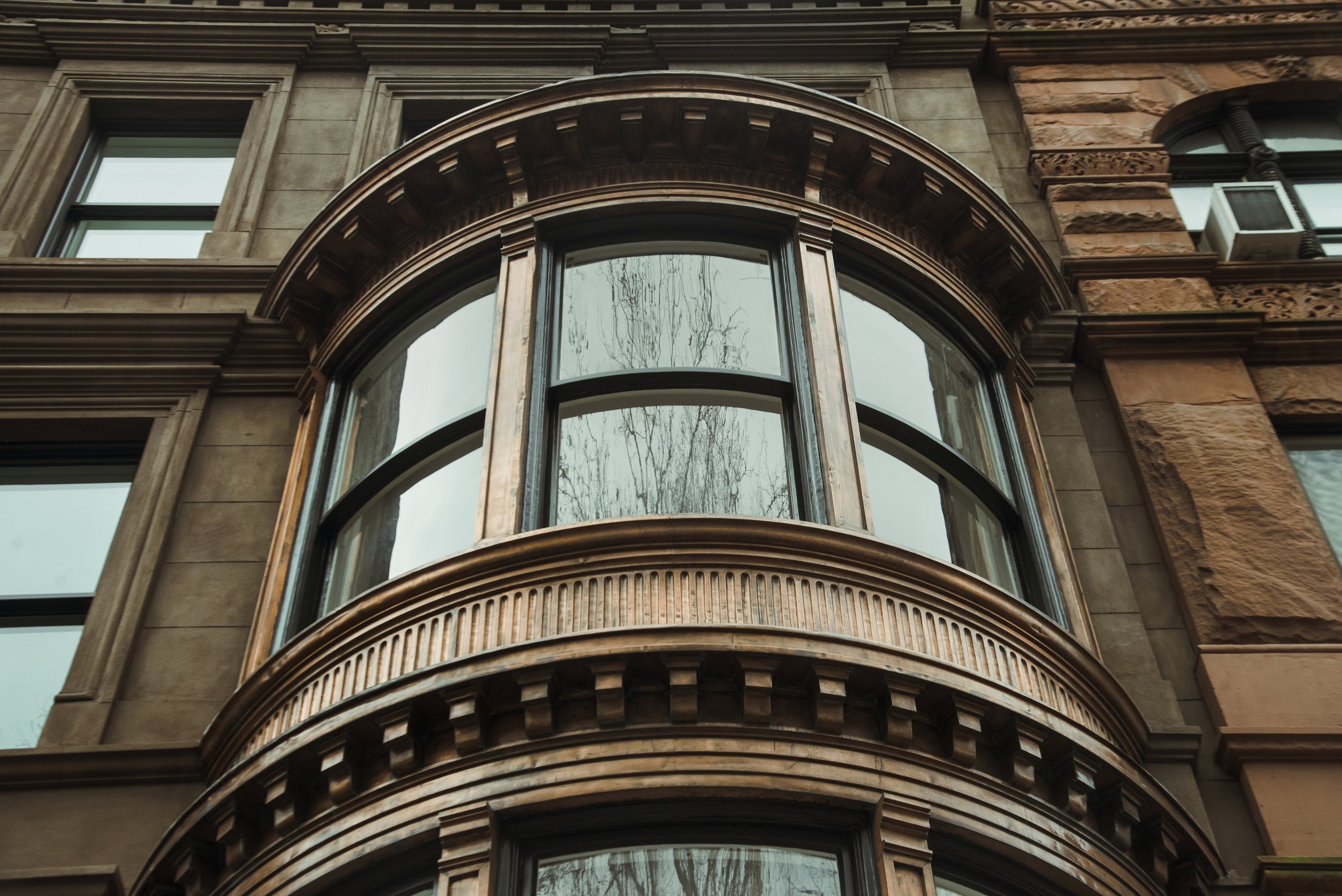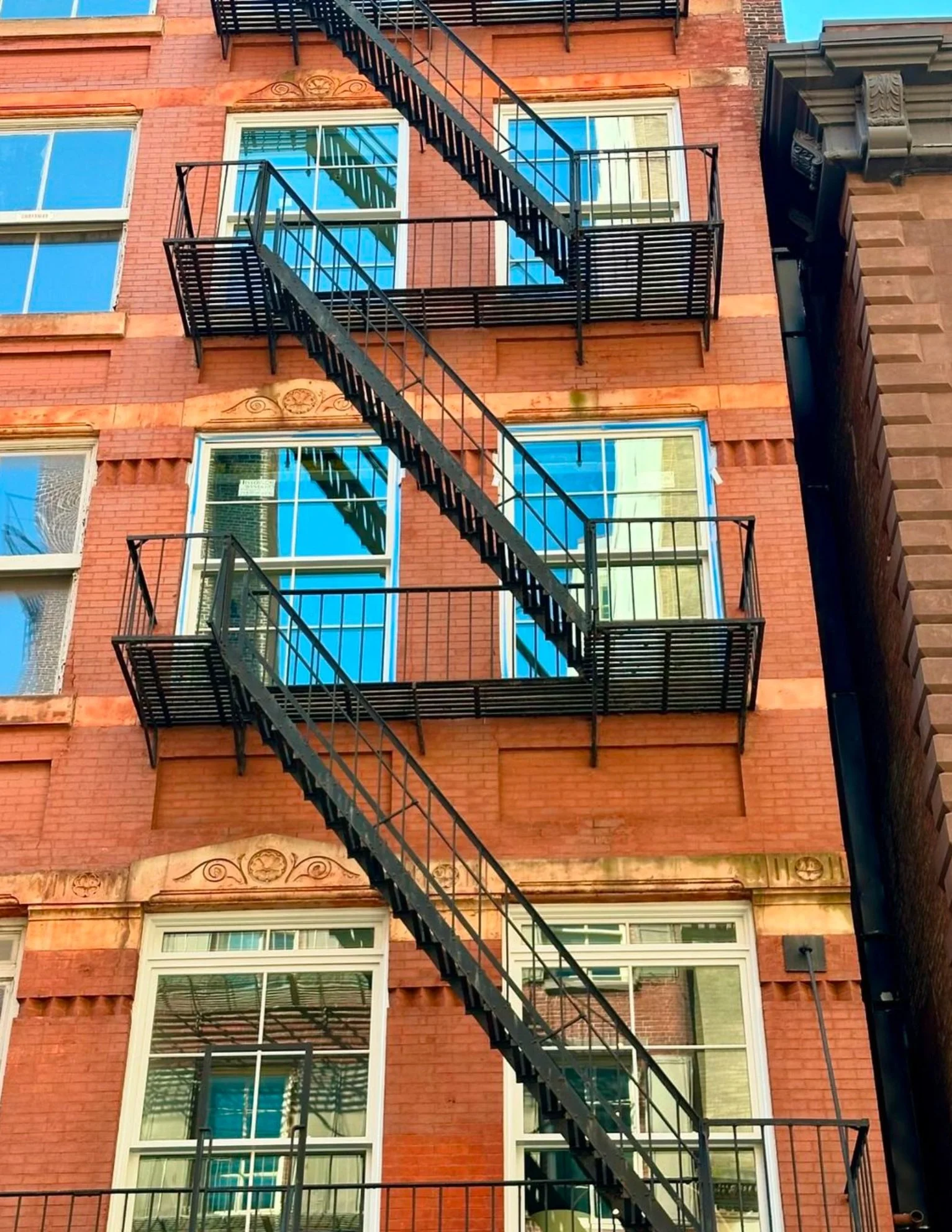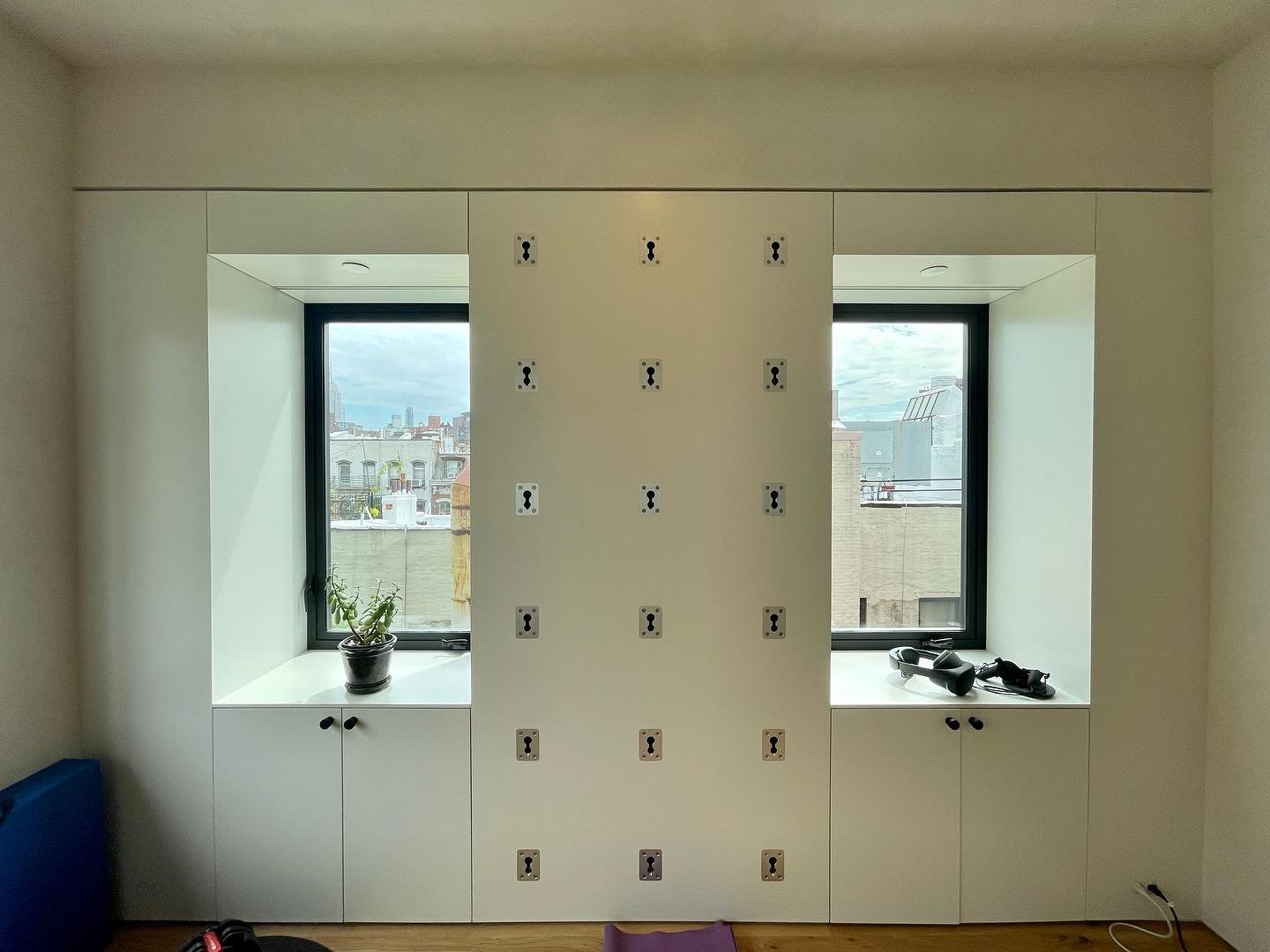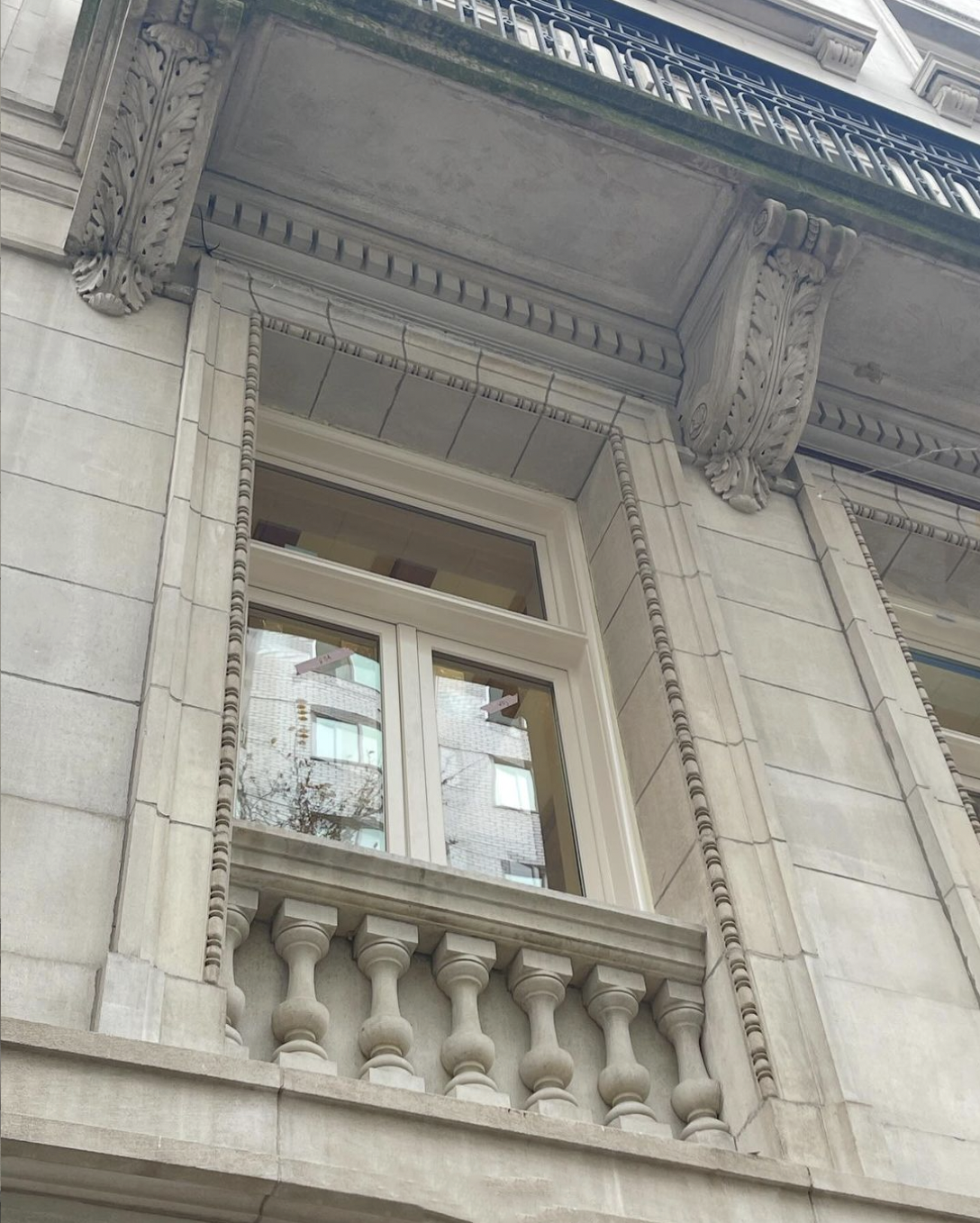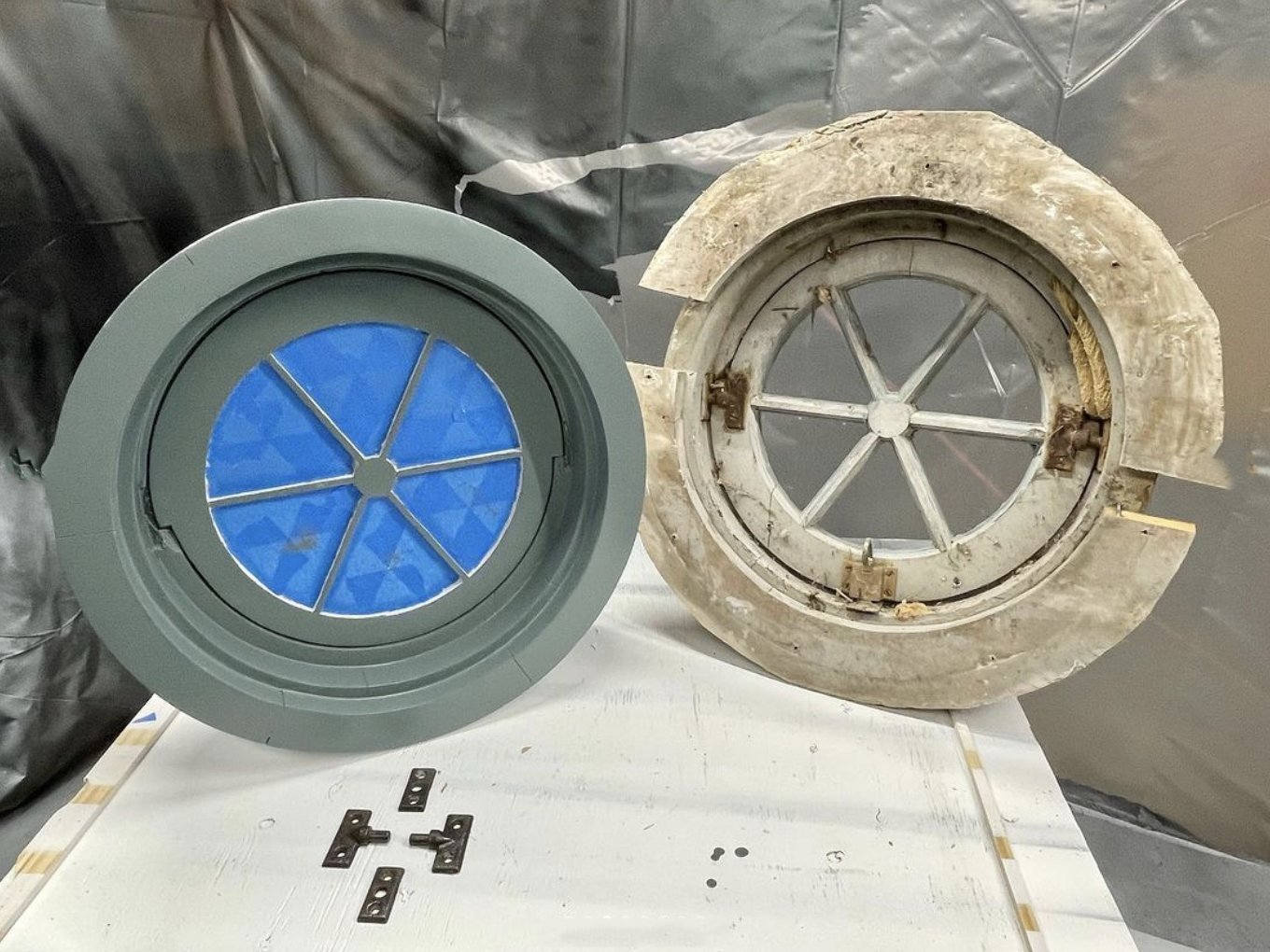Historical Windows of New York provided the custom windows for Amanda Seyfried’s Upper East Side home, recently featured in Architectural Digest.
When most people hear Landmark Windows, they think historic, and historic doesn’t always sound like high performance. We often get questions about whether landmark-approved windows can truly meet today’s standards.
When it comes to historic preservation, the elegance of a door lies not only in its design but also in its anatomy. From grand entryways in landmark buildings to charming brownstone doors in New York City, understanding the parts of a door can help you make more informed decisions.
Installing 350-pound, 10-foot-tall steel fire-rated ceramic glazed lot line windows is no easy feat—especially in a historic TriBeCa building with just five feet of clearance between neighboring structures. When working several stories up, over skylights and alleyways, precision is key. These projects demand careful planning, expertise, and patience to ensure both compliance and craftsmanship.
In an era where sustainability is key, restoring historic windows offers an environmentally friendly alternative to full window replacement. While modern windows may promise energy efficiency, the reality is that preserving existing windows is often the greener and more responsible choice.
New York City’s historic brownstones are treasured for their architectural beauty and timeless charm. However, as winter sets in, these classic buildings often face challenges when it comes to energy efficiency. Aging windows, drafty frames, and single-pane glass can make it difficult to keep homes warm and energy bills manageable. The good news is that preserving the character of your historic brownstone doesn’t mean sacrificing modern comfort.
Located in the heart of Manhattan's Greenwich Village, St. Luke’s Place stands as a testament to New York City’s rich architectural and cultural history. This charming block, made up of fifteen townhouses, numbered 3-17, showcases a cohesive ensemble of red brick homes, including No. 17, a triangular-shaped white stucco townhouse in the Anglo-Italianate style.
New York City is home to countless iconic buildings, many of which are designated as landmarks due to their historical significance and architectural beauty. A critical part of maintaining these buildings is the preservation of their original windows.
New York City is known for its rich architectural history, with buildings that showcase a variety of window styles from different eras. These windows not only contribute to the aesthetic beauty of the buildings but also reflect the cultural and historical significance of the time in which they were built.
New York’s brownstones are iconic symbols of the city’s architectural heritage, often boasting beautiful, original windows that have withstood the test of time. However, these historical windows require special care and attention to preserve their character and functionality.
Nestled in the heart of New York City, 214 West 16th Street stands as a captivating example of architectural evolution. Built in 1898, this brick building seamlessly blends the Federal Style with touches of Neoclassical, Beaux-Arts, and Baroque elements.
We're excited to announce that our installation work is about to begin at the iconic 16 East 16th Street, where this historic six-story structure is being converted into a nine-story hotel in Union Square. This project, designed by the renowned BKSK Architects and developed by Trevor Stahelski under Gramercy Park House LLC, involves the meticulous preservation of the façade of the 1891 building.
New York City, with its towering skyscrapers and modern glass facades, is also a treasure trove of historical architectural gems. Among these is 130 East 67th Street at Lexington Avenue, a stunning building that embodies the grandeur and elegance of early 20th-century design.
Mobilization day is here, marking the beginning of a new chapter in one of our favorite New York neighborhoods, Tribeca. Today, we embark on a journey at 108-110 Franklin Street, a project destined to be a standout in this historic area.
Learn how our expert team at Historical Windows of New York meticulously replaced oversized Double-Hung Mahogany Weight and Chain windows, approved by the NYC Landmarks Preservation Commission in Soho.
Nestled on the Upper West Side of Manhattan, Harperley Hall stands as an architectural marvel and a testament to New York's rich history. As a team passionate about historic preservation and architectural excellence, Harperley Hall has been a frequent site for us to showcase our talents over the years.
New York City's skyline is a testament to human ingenuity and architectural brilliance. Among the towering skyscrapers and bustling streets lie windows that have become iconic symbols of the city's rich history, culture, and innovation. From the sleek modernity of glass-walled structures to the ornate detailing of historic buildings, each window tells a story of New York's past and present.
New York City's skyline is a testament to architectural innovation and diversity. One key element that contributes to the uniqueness of its buildings is the variety of windows used. From historic brownstones to modern skyscrapers, the windows in NYC homes and buildings showcase a rich tapestry of styles and functionalities.
Nestled along West 95th Street in New York City's Upper Central Park West Westside Landmarks Historic District stand four enchanting Row Houses that have withstood the test of time.
In the heart of Manhattan, amidst the hustle and bustle, stands a pair of architectural gems that have witnessed the transformation of time and culture. Our latest endeavor has been nothing short of a meticulous dance with history, as we conclude the restoration of two remarkable structures on East 70th Street, just off 5th Avenue.
New York City is a treasure trove of architectural marvels and historical landmarks, each with a unique story to tell. Nestled within the rich tapestry of the city's history are its historical buildings, many of which boast intricate interior designs that include iconic interior doors.
New York City, a place steeped in history and architectural marvels, is adorned with a wide array of historical buildings that tell tales of a bygone era. One integral part of these historical structures are their windows, which not only provide a glimpse into the past but also contribute to the aesthetic charm of the city.
We are currently wrapping up this beautiful custom Landmark Mahogany Parrett Windows and Doors Store Front at 10 Astor Place, incorporating a custom decorative Louver above the entry vestibule to accommodate mechanicals.
Restoring and replacing windows are two distinct approaches when it comes to preserving the architectural integrity of a building.
Built in 1925, 35 East 9th Street is one of three (29, 35, 45) buildings designed by Helmle & Corbett Architects. Helmle & Corbett were American architects primarily active in New York City but also completed projects across the United States and in London.
This once elegant Italianate style Mansion, built in 1930, as a multi-family co-op, is located steps from Fort Green Park. South Portland is named after Portland Place, an upscale street that connected Regent Street and Regent Park Terraces, one of London’s finest areas.
Lighting plays a significant role in developing interaction between humans and museum artifacts in one defined space. Typically, museum environments have two types of light–natural and artificial.
We recently had the privilege to begin work at 1112 Park Avenue, which was built in 1927 by noted architect Emery Roth, as a white glove, full-service pre-war cooperative, ideally located in the heart of Carnegie Hill and is deemed one of its finest.
Built in 1899, this single family home is a prime example of turn-of-the-century transitional Colonial and Victorian architecture, both inside and out. The home is one of only a few remaining on this block.
Our current penthouse apartment project at 370 Central Park West is situated in a classic 1918 example of half-timbered Tudor Revival architecture that’s unusual for New York.


